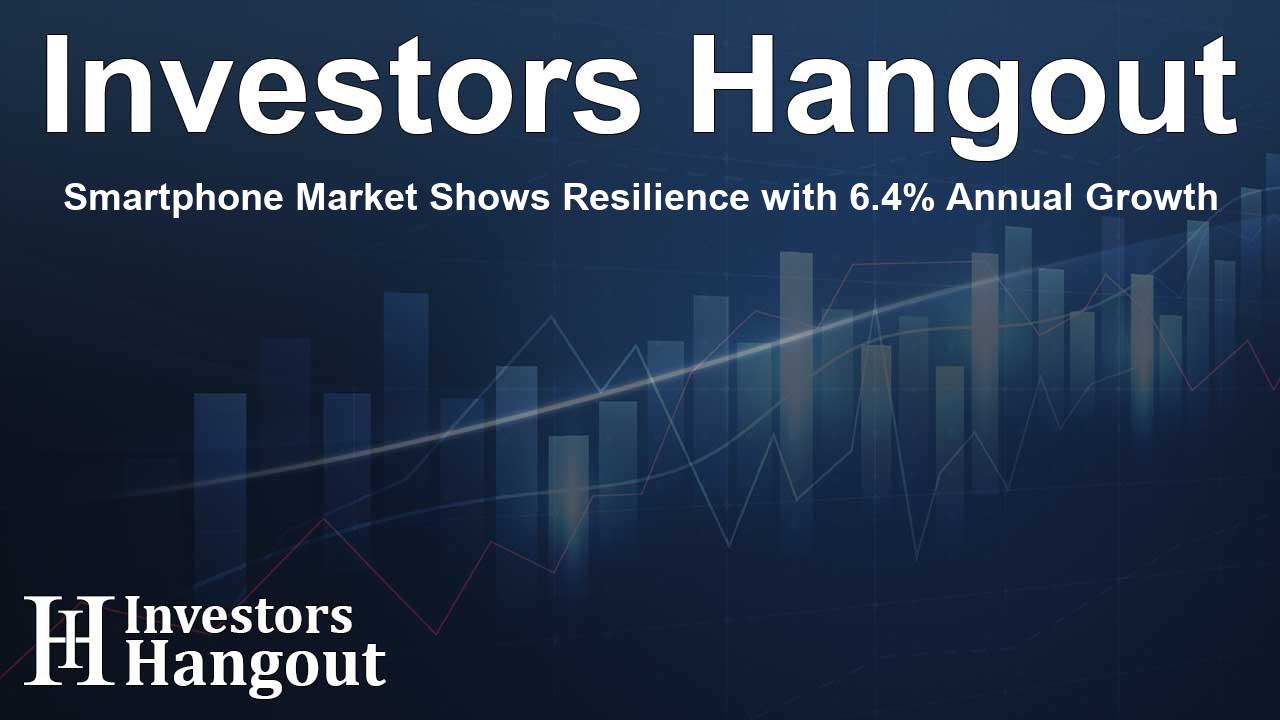Smartphone Market Shows Resilience with 6.4% Annual Growth

Global Smartphone Shipments on the Rise
Recently released data reveals that global smartphone shipments have achieved a remarkable growth rate of 6.4% in 2024. This upward trend marks a significant rebound in the market, especially after experiencing two challenging years of decline. Across the fourth quarter alone, shipments reached 331.7 million units, demonstrating a year-over-year growth of 2.4%. This newfound momentum signals an optimistic outlook for the future of the smartphone industry.
Resilience Amid Economic Challenges
According to industry analysts, the remarkable growth in 2024 highlights the resilience of the smartphone market. Despite ongoing macroeconomic challenges, such as foreign exchange concerns in emerging markets and heightened inflation, vendors exhibited adaptability in their strategies. Initiatives included promotional activities, the introduction of devices across various price segments, interest-free financing options, and aggressive trade-ins, particularly in China and other emerging regions.
Adapting Strategies for Growth
Nabila Popal, a senior research director at IDC, noted that these adaptive strategies have bolstered demand and led to premiumization within the market. She mentioned that while major players like Apple and Samsung maintained their dominance in both the fourth quarter and for the year, they faced year-over-year declines as aggressive competition arose from Chinese manufacturers focusing on low-end devices.
Market Share Dynamics in 2024
Despite their strong presence, Apple and Samsung saw their market shares shrink in response to the rise of competitors, particularly Xiaomi, which secured the third position in the quarterly and annual rankings. Xiaomi boasted the highest growth rate among the top five vendors. At the same time, Transsion and Vivo were closely matched in ranking, indicating an intensely competitive atmosphere.
The Surge of Chinese Smartphone Vendors
Another noteworthy trend in 2024 was the surge in smartphone shipments from Chinese companies like Xiaomi, OPPO, and others. Together, these brands shipped more devices than ever, accounting for a remarkable 56% of the global shipments in the fourth quarter. This collective achievement underscores the growing influence of Chinese manufacturers in capturing market share and catering to diverse consumer preferences.
Looking Ahead: Future Growth Prospects
As we look ahead to 2025, the expectation is for continued market growth, albeit at a slower pace. Analysts predict that ongoing updates in devices and a fulfillment of pent-up demand will play crucial roles in sustaining this positive trajectory. However, potential new tariffs and administration policies in various regions have introduced uncertainties that could impact vendor strategies in the months to come.
Shifts in Consumer Preferences
Interestingly, while there has been growth across various regions, the demand for foldable smartphones has decreased, with many vendors shifting their focus from foldables to innovations in artificial intelligence. This pivot reflects consumer behavior trends and technological advancements that prioritize new AI capabilities over foldable designs.
Impact of AI on Consumer Technology
Anthony Scarsella, IDC’s research director, pointed out that the flattening interest in foldable technology has prompted vendors to reconsider their research and development priorities. As consumers express a desire for more AI features, it's likely we'll see technological enhancements that integrate AI into upper-echelon devices, enhancing user experience.
Conclusion
The landscape of the global smartphone market in 2024 illustrates a dynamic industry that is resilient in the face of economic challenges. With significant growth in shipments and evolving consumer preferences, the road ahead remains promising for smartphone manufacturers. As strategies adapt and the market continues to evolve, industry stakeholders must remain attentive to shifts in demand to maintain their competitive edge.
Frequently Asked Questions
What factors contributed to the smartphone market's growth in 2024?
The growth was driven by effective vendor strategies, including promotional activities, pricing diversity, and interest-free financing options.
How did Chinese vendors impact the smartphone market?
Chinese vendors significantly expanded their market presence, focusing on low-end devices and achieving record shipments in Q4 2024.
Which companies led the smartphone market in 2024?
Apple and Samsung remained market leaders, although they faced increased competition from Xiaomi, Transsion, and Vivo.
What are the expectations for the smartphone market in 2025?
Analysts expect continued growth, albeit at a slower pace, with innovations and refreshed devices playing key roles.
How is AI influencing smartphone development?
Consumer interest in AI advancements is prompting vendors to prioritize R&D in AI features, overshadowing the foldable smartphone trend.
About The Author
Contact Olivia Taylor privately here. Or send an email with ATTN: Olivia Taylor as the subject to contact@investorshangout.com.
About Investors Hangout
Investors Hangout is a leading online stock forum for financial discussion and learning, offering a wide range of free tools and resources. It draws in traders of all levels, who exchange market knowledge, investigate trading tactics, and keep an eye on industry developments in real time. Featuring financial articles, stock message boards, quotes, charts, company profiles, and live news updates. Through cooperative learning and a wealth of informational resources, it helps users from novices creating their first portfolios to experts honing their techniques. Join Investors Hangout today: https://investorshangout.com/
The content of this article is based on factual, publicly available information and does not represent legal, financial, or investment advice. Investors Hangout does not offer financial advice, and the author is not a licensed financial advisor. Consult a qualified advisor before making any financial or investment decisions based on this article. This article should not be considered advice to purchase, sell, or hold any securities or other investments. If any of the material provided here is inaccurate, please contact us for corrections.
